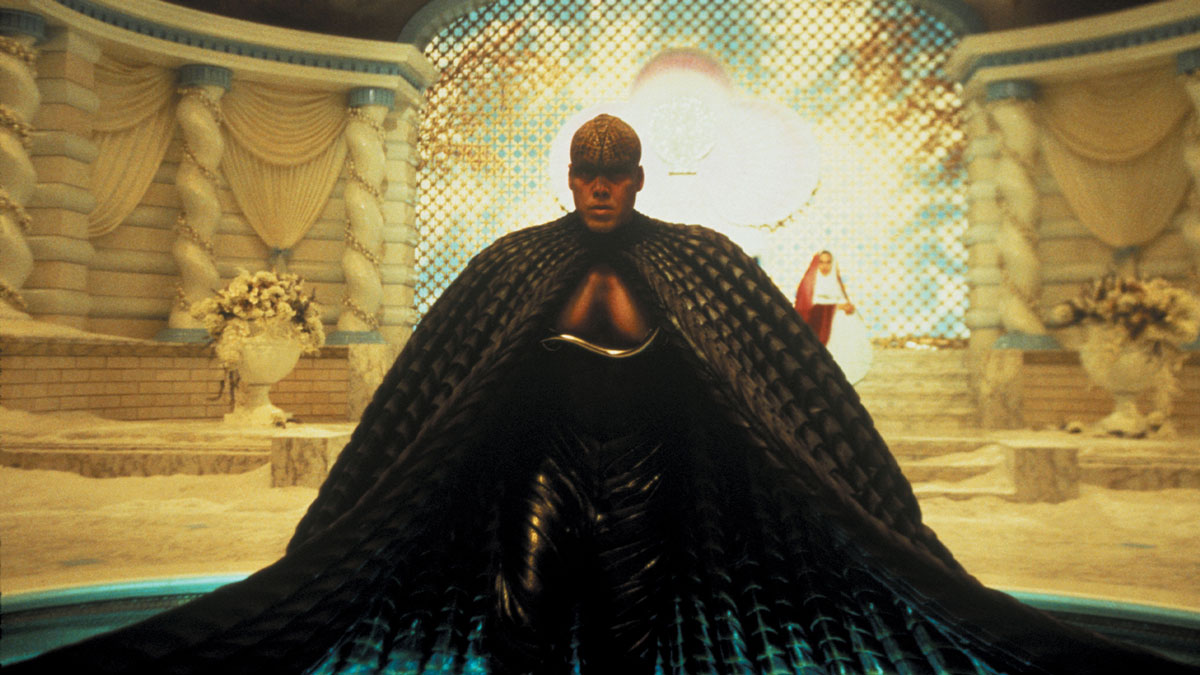
(c) Photofest / Getty Images
Is ``The Cell'' as beautiful as a sewing machine and a bat umbrella accidentally meeting on an autopsy table?
2020.12.01
Artworks cited in “The Cell” Part 3
Floria Sigismondi and Joel-Peter Witkin
Catherine chases the boy into a drab, sepia-toned mansion, where she unwittingly unleashes the strong female guardian, causing the windows in the rows of small rooms to open, revealing a grotesque amusement park-like scene in which the women Starger has killed so far are brought to life by mechanical devices.
These images are likely a imitation of the scenes that photographer and film director Floria Sigismondi created in her music videos for artists such as Marilyn Manson and David Bowie, and the source of Sigismondi's images is the work of photographer Joel-Peter Witkin.
Marilyn Manson "Tourniquet" Music Video
He incorporates techniques such as daguerreotype photography to give his work a taste of "photographs discovered 100 years ago." He chooses corpses as his subjects, and like any good photographer, he leaves behind works that depict things and people that are unbearable to stare at. In "The Cell," he imprints the vulgar and hard impression of Witkin through Sigismondi.
■ William Blake "The Great Red Dragon and the Woman Clothed with the Sun"
The captured Catherine is brought to Stargher's "throne room," where Stargher approaches Catherine, tying her hair up in a bun and attaching tapestries from the walls to pierced holes in his back, creating the appearance of fluttering wings.
A scene that references "The Great Red Dragon and the Woman Clothed with the Sun"
This figure is a reference to William Blake's "The Great Red Dragon and the Woman Clothed with the Sun," which also played an important role in the film " Red Dragon " (2002). In Blake's "The Great Red Dragon" series, which is based on the Book of Revelation in the New Testament, the dragon is a symbol of the devil: evil. In "The Cell," the dragon appears as a figure of "evil" in contrast to Stargher's "conscience," which is in the form of a child.
■ Odd Nerdrum: "DAWN"
Peter also enters Stargur's consciousness to help Katherine, who has been absorbed into Stargur's consciousness. The first thing he encounters are three girls sitting with their mouths open and looking up. This is a quote from Odd Nerdrum's work "DAWN".
Nerdrum has taken up pop art-like "kitsch" subjects with the neo-baroque painting techniques of Rembrandt and Caravaggio, leaving behind works that instill a strong sense of discomfort in the viewer. The quotes in "The Cell" also have the effect of instantly making viewers feel the discomfort of having come from the real world to the world of consciousness.
■ Pierre et Gilles
To heal Stargur's emotional wounds, Catherine invites him into her world of consciousness, where words become beautiful goldwork patterns and landscapes are painted in brilliant, brilliant colors.
Scenes referencing photographs by "Pierre et Gilles"
This is a reference to a photograph by Pierre et Gilles, an art duo consisting of photographer Pierre Comois and painter Gilles Blanchard. Their work is glamorous and dazzling, and is called "camp," using a lot of vibrant light blues and pinks reminiscent of religious paintings in India and South America. However, this excessive and artificial glamor also paradoxically involves death, in the style of Memento mori. In "The Cell," the Pierre et Gilles-esque world of Catherine becomes the "heaven" of Sterger's conscience.

